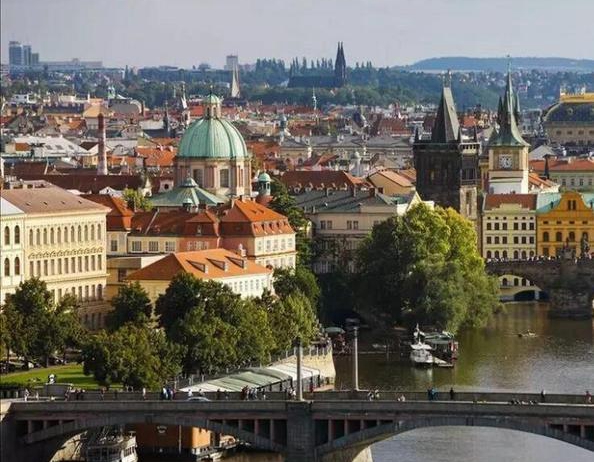
Home > Culture

In 2016, there was a 229 percent increase
in outbound travel for Chinese tourists to CEE countries, with Poland,
the Czech Republic, Hungary, Serbia and Slovenia the most popular
destinations. [Photo/Xinhua]
The Central and Eastern European (CEE) countries are rich in historic culture and beautiful scenery, but their potential has yet to be tapped by Chinese tourists due to a lack of knowledge and convenient flights, according to Istvan Ujhelyi, vice-chair of the Transport and Tourism committee of the European Parliament.
However, the growth potential is enormous, as the Belt and Road Initiative will usher in more people-to-people exchanges between China and the region, said Ujhelyi, while in the Romanian capital of Bucharest to attend the 2017 China-CEE Countries Political Parties Dialogue that ended on July 14.
"To attract more Chinese tourists, the region has to change visa policies and open more direct flights," said Ujhelyi, who, last year, launched the Europe China OBOR Culture & Tourism Development Committee in Brussels to facilitate exchanges between China and its European tourism partners.
The committee organized study tours for European tourism decision-makers to China to gain an understanding of the different cultural and tourism environment so as to adapt their tour products and services for tapping market potential.
He suggested CEE tourism decision-makers lay more stress on other areas instead of just focusing on famous cities like Beijing and Shanghai when introducing attractions and resources in China.
"We have a lot to do," said Ujhelyi. "We need more tourist-oriented services. For example, we need more Europeans with a command of Mandarin and Chinese characters, including road signs and route signs at airports, in hotels and on the street, and also being able to read the Chinese menu in restaurants."
Tourism, a bridge for the spread of civilization, cultural exchanges, and the promotion of friendship, could promote construction of the Belt and Road, as it helps build mutual trust and understanding, he added.
"Tourism is very important in people-to-people exchanges," said Michal Ludwikowski, General Director of the Polish Economic Congress Foundation, adding that his country is welcoming more and more Chinese tourists.
"Poland is a place where East meets West. It has rich culture and beautiful landscape, nature that has not been destroyed so far, and architecture with different influences."
He believed the tourism industry in his country, as well as in the whole region would boom as Chinese tourist appreciate the diversity available, and that service would be improved as Chinese companies had begun making relevant investment.
Ge Yujing, vice president of tuniu.com, one of the top three Chinese online travel agencies said CEE countries would likely become hot destinations for Chinese tourists, as compared to other famous places in Europe and America, because this region offers fresh and different travel experiences with a more original European flavor allied with inexpensive travel services.
Visa-free travel or visas available visa on arrival could boost the tourism in the region, said Ge, who was in Bucharest for the Dialogue, but planned to visit the Czech Republic and Belarus afterwards to seek ways of cooperation.
Ge pointed out the CEE countries needs to develop more Chinese-tailored tourism products and provide more suitable services for Chinese tourists. In addition, direct flights were necessary to reduce travel expenses and create more comfort for tourists.
In 2016, there was a 229 percent increase in outbound travel for Chinese tourists to CEE countries, with Poland, the Czech Republic, Hungary, Serbia and Slovenia the most popular destinations.